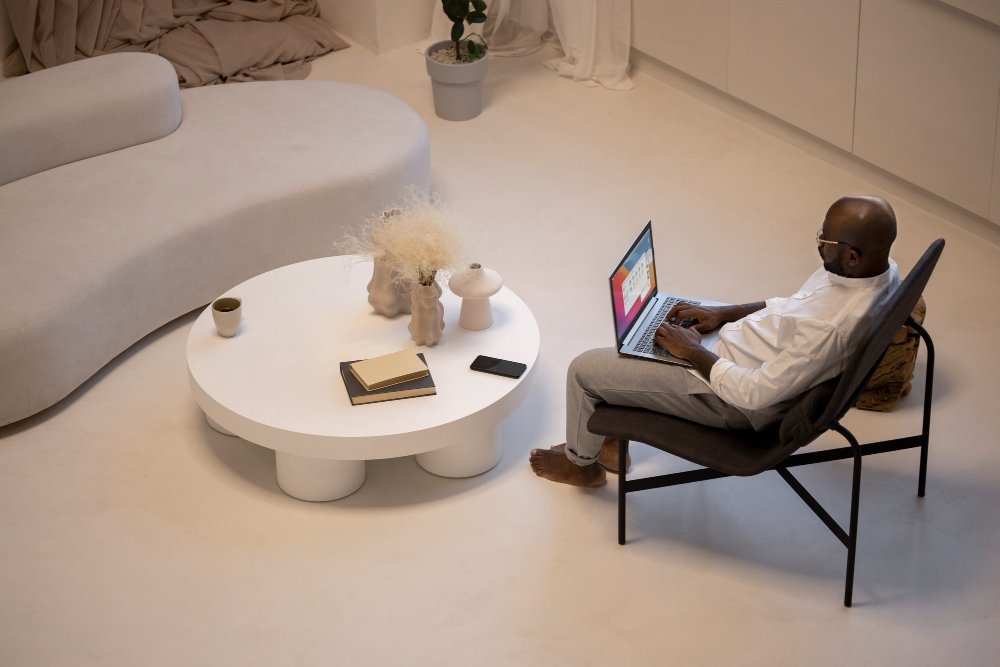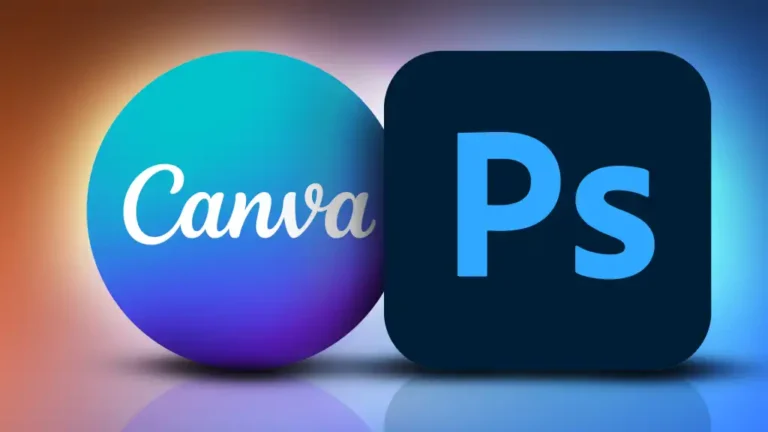Canva vs Photoshop: Which Design Tool Is Better for Beginners?
Canva vs Photoshop: Which Design Tool Is Better for Beginners?
If you’re new to design, one big decision can slow you down before you even start: Should you learn Canva or Photoshop first? I hear this question from students, freelancers, content creators, and small business owners across Kenya every week. The short answer: start where you’ll get results fastest, then level up. This guide will help you decide based on your goals, budget, device, and how serious you are about professional design.
Before we dive in, if you’re actively building your personal brand or freelance career, bookmark these for later reading:
- Freelancing Is a Skill — Not Just a Job. Here’s How to Master It.
- Graphic Design vs Web Design: Which Path Should You Take?
What Canva Does Best (Beginner-Friendly Speed)
Canva was built for non-designers and fast creators. If your main goal is to produce clean, branded graphics for social, proposals, CVs, pitch decks, course slides, or simple ads, Canva gets you there with minimal learning curve.
Why Beginners Love Canva
- Drag-and-drop editor—no layers required.
- Thousands of ready-made templates sized for every platform.
- Works in-browser and on mobile (design from your phone).
- Built-in fonts, icons, stock photos, and brand color storage.
- Magic Resize lets you repurpose one design across formats in seconds.
If you’re creating social posts to support your brand or business, start here:
- Content Creation Classes
- Social Media Management Masterclass (AI-Powered)
- How I Grew My Facebook Page to 238K Followers and 15M Monthly Impressions in Kenya
Canva Works Especially Well For
- New freelancers creating quick client mockups.
- Small business owners who need marketing materials now.
- Creators producing daily social graphics.
- Students hustling with limited devices. See: How to Make KES 3,000 as a Student Using Canva.
Want hands-on training using Canva for real client work? Enroll in the Canva Client Projects Masterclass.
What Photoshop Does Best (Professional Control)
Adobe Photoshop is the industry standard for pixel-level editing, brand assets, and advanced creative work. It has a learning curve—but also no ceiling. If you plan to sell high-value design services, retouch photography, create marketing campaigns, or work with agencies, Photoshop becomes essential.
Why Serious Designers Learn Photoshop
- Full control over layers, masks, blending modes, filters.
- High-resolution editing for print, product catalogs, and ads.
- Advanced retouching for portraits, e-commerce, and branding.
- Integrates with Illustrator, InDesign, Lightroom—professional workflow.
- Supports custom brushes, actions, smart objects, and non-destructive edits.
If you want to turn design into a high-income skill, read:
- Graphic Design More Than Just Art — It’s Your Future High-Income Skill
- Top 10 Graphic Design Courses in Kenya for Beginners (2025 Guide)
- How Much Do Graphic Designers Earn in Kenya in 2025?
Ready to learn Photoshop step-by-step? Start here:
- Graphic Design Essentials: Mastering Adobe Photoshop & Illustrator
- Graphic Design Bootcamp (current & archived sessions available)
Side-by-Side Comparison for Beginners
| Feature | Canva | Photoshop |
|---|---|---|
| Learning Curve | Very low | Moderate to steep |
| Best For | Social media, presentations, quick branding | Professional design, image editing, advanced graphics |
| Device Access | Browser + Mobile App | Desktop (power recommended) |
| Templates | Extensive, ready-to-use | Limited (you build from scratch or import) |
| Collaboration | Built-in team sharing | Possible but heavier workflow |
| File Types | PNG, JPG, PDF, MP4 (limited editable formats) | PSD, TIFF, full export control, pro formats |
| Speed to First Result | Minutes | Hours (early), faster as you learn |
| Income Potential | Good for starter gigs & content packages | Higher for custom, premium design work |
If you’re trying to earn quickly with minimal learning time, combine Canva templates with positioning and packages. See: How Kenyan Freelancers Can Make KES 30K/Month with Just Two Clients.
How to Decide: Ask These 5 Questions
1. What’s Your Immediate Goal?
- Fast branding/content → Choose Canva.
- Professional design portfolio → Learn Photoshop.
Related read: Your Designs Are Pretty — But Do They Sell?
2. What Device Do You Have?
- Only a smartphone? Start with Canva.
- Laptop with reasonable specs? You can install Photoshop (trial to start).
See also: You Don’t Need a Fancy Laptop to Start — You Need Focus.
3. Are You Building a Brand or a Career?
- Personal brand + content marketing → Canva + templates.
- Freelance service provider → Add Photoshop ASAP.
Read: How to Build a Personal Brand That Attracts Clients.
4. Will Clients Expect Editable Source Files?
Corporate clients may request layered PSDs or print-ready assets—Photoshop gives you that control. If you’re still packaging entry-level services, start with Canva and upgrade later. Helpful: How to Package Your Freelance Services for Quick Client Approvals.
5. How Fast Do You Need to Earn?
If you need money now, start with Canva gigs—social posts, flyers, CV makeovers. Then reinvest earnings into professional training. Read: How to Make KES 10,000 Daily in Kenya (Real Strategies That Actually Work).
A Smart Learning Path: Start → Earn → Upgrade
Phase 1: Start Creating in Canva
Create 20–30 portfolio pieces using templates: social posts, event posters, simple brand kits. Offer low-cost starter packages to friends, student groups, or small businesses. Learn branding basics here: Content Creation Classes.
Phase 2: Improve Your Design Eye
Study layout, color contrast, typography, and visual hierarchy. Use this guide: Graphic Design vs Web Design: Which Path Should You Take?.
Phase 3: Learn Photoshop for Premium Work
Move into custom brand design, layered mockups, product images, and ads. Train via:
- Graphic Design Essentials: Mastering Adobe Photoshop & Illustrator
- Graphic Design Bootcamp (Prep)
- Graphic Design Bootcamp Session
Phase 4: Turn Skill into Income
Package ongoing design support, brand kits, and retainer offers. Use:
Pricing: What Can You Charge With Each Tool?
Entry-Level Canva Packages (Beginner)
- Social media starter pack (12 posts): Ksh 3,000–7,000.
- Simple event poster + social resize: Ksh 1,000–2,500.
- CV + personal brand kit: Ksh 2,500–5,000.
See how students get paid: My First Paid Design — The Small Sale That Changed Everything.
Photoshop-Based Packages (Intermediate to Pro)
- Full brand identity kit (logo, colors, social templates): Ksh 20K–60K+.
- Product image cleanup + e-commerce listing assets: Ksh 10K+ per batch.
- Campaign graphics for agencies: custom pricing.
Learn pricing confidence: The Secret to Charging More Without Feeling Guilty.
Common Beginner Mistakes (And Fixes)
Mistake 1: Relying on Templates Without Editing
Fix: Customize fonts, colors, spacing to match client branding. Use brand kit features in Canva.
Mistake 2: Exporting Low-Quality Images
Fix: Always export at proper resolution. For print, use PDF; for social, PNG high quality. More help: What Most Web Designers Forget — It’s Not About the Site, It’s About the Sale.
Mistake 3: No Portfolio = No Clients
Fix: Publish even simple before/after examples. Use: How to Build a Personal Website That Converts Visitors into Clients.
Mistake 4: Jumping Between Tools Too Soon
Fix: Get competent in one tool, then add the next. Read: Why Most Freelancers Stay Stuck at Low Income — and How to Break Through.
Final Thoughts
If you’re a beginner in Kenya trying to break into design, content creation, or freelance work, you don’t have to get this decision “perfect.” Start where momentum is easiest. For most beginners: start with Canva, get paid, build confidence, then upgrade into Photoshop when you’re ready to deliver premium work and charge more.
Your next step depends on your goal:
- Want quick, good-looking graphics? Start learning in the Canva Client Projects Masterclass.
- Ready to go pro and learn the Adobe ecosystem? Enroll in Graphic Design Essentials: Photoshop & Illustrator.
- Unsure where to start? Browse all programs: All My Courses.
Keep creating. Skill beats software. Consistency beats perfection.






